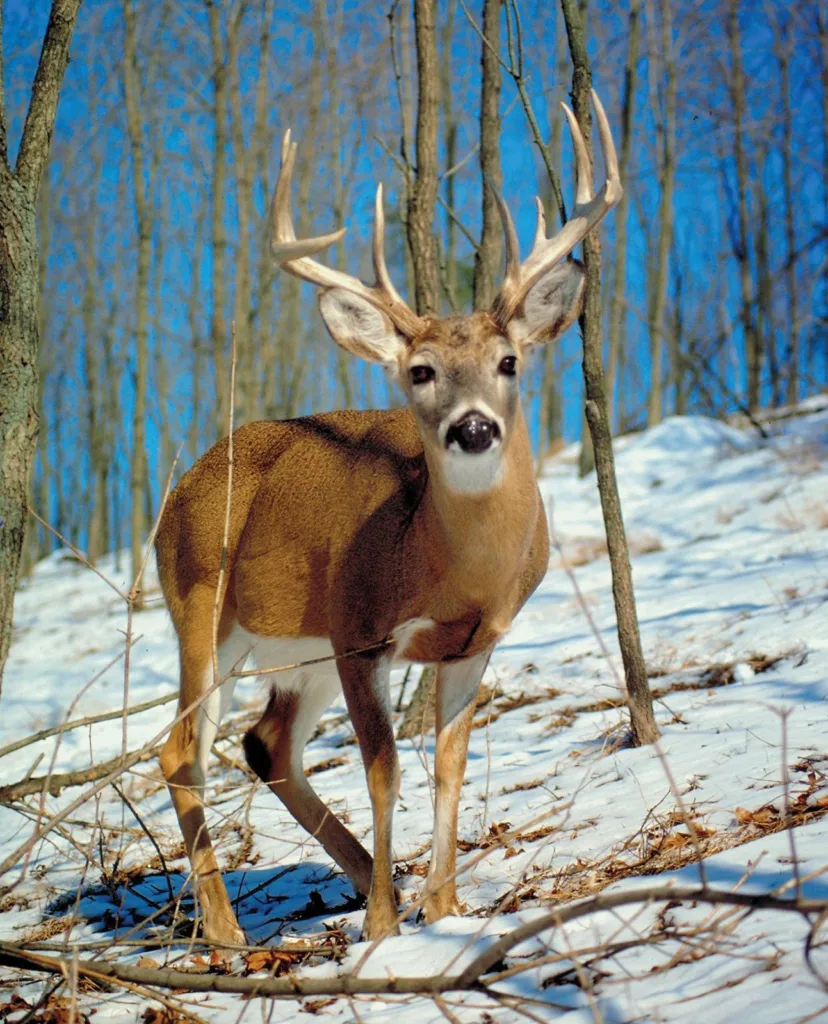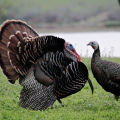Deer are fascinating creatures that are known for their graceful movements and beautiful appearance. One of the most common questions that people ask about deer is whether they hibernate during the winter months. While it may seem like a reasonable assumption that deer would hibernate to survive the cold, harsh winters, the truth is that deer do not hibernate.
Instead, deer have several adaptations that help them cope with the winter weather. One of the most significant factors is their metabolism. Deer are known to decrease their metabolism by up to 50% during the winter months, which allows them to conserve energy and eat less. This reduced metabolism also means that deer do not need to eat as much food to maintain their body weight.
Deer also have a thick layer of fur that helps to insulate them from the cold. This fur is especially important during the winter months when temperatures can drop to extreme lows. Additionally, deer have a layer of fat that they can rely on for energy during periods when food is scarce.
While deer do not hibernate, they do alter their behavior during the winter months. For example, some deer may hunker down in one spot for several days at a time, conserving energy and relying on their fat stores. Others may seek shelter under coniferous trees like pine trees, which provide a natural windbreak and insulation.
Migration is another adaptation that some deer use to survive the winter months. White-tailed and mule deer in northern and western states are known to travel long distances of 8 to 15 miles in search of a good yarding spot with shelter and food sources. These yarding spots can provide a safe haven for deer during the winter months.
In terms of sleep, deer sleep anywhere they bed down and may do so singly or in groups. During the daylight hours, it is more common for deer to sleep in heavy cover where they feel secure.
While deer do not hibernate, they have several adaptations that help them survive the winter months. These adaptations include reducing their metabolism, relying on their fat stores, seeking shelter, and sometimes even migrating to find better living conditions. By understanding these adaptations, we can better appreciate the resilience and adaptability of these amazing creatures.
How Do Deer Survive the Winter?
During the winter season, deer tend to become less active than usual. They reduce their metabolism by almost 50% to save energy and consume less food. To survive the harsh weather conditions, deer may physically hunker down, and sometimes they don’t move for days, even to eat. They rely on their fat stores to provide them with the necessary energy.
Apart from reducing their activity levels, deer also change their feeding habits during winter. They may eat less and consume different types of food, such as woody vegetation, twigs, and buds, as opposed to grass and leaves, which may not be available in the winter.
Furthermore, deer may also form groups during winter for warmth and protection. They huddle together, and their body heat helps to keep them warm. They may also seek shelter in dense forests or undergrowth to escape the wind and snow.
During winter, deer become less active, reduce their metabolism, change their feeding habits, form groups for warmth and protection, and seek shelter to survive the harsh weather conditions.

Where Do Deer Spend Their Winters?
In the winter, deer do not hibernate, which means they need to find a warm place to sleep when the temperatures drop. To keep warm, they often seek shelter under coniferous trees, such as pine trees. These trees provide good cover and protection from the wind and snow, as well as some insulation from the cold.
Deer may also seek shelter in areas with thick underbrush or dense forests, where they can find more protection from the elements. They may also gather in groups for warmth and safety.
It’s important to note that while deer do move around in the winter, they may not travel as far as they do in other seasons. This is because they need to conserve energy to survive the cold weather and limited food sources.
Deer will seek shelter in areas that provide protection from the elements and keep them as warm as possible during the winter months.
Migration and Hibernation Habits of Deer
Deer are known to migrate during the winter months in search of food and shelter. While some species of deer, such as the white-tailed and mule deer, are known to migrate, others do not. Migration is a seasonal movement of animals from one region to another in search of a better habitat or food source. Deer usually migrate to areas where there is ample food and shelter to survive the harsh winter conditions. During migration, deer can travel long distances, usually between 8 to 15 miles to find a suitable yarding spot.
Deer do not hibernate during the winter, as they are well adapted to survive in extreme weather conditions. Their bodies are designed to cope with the cold weather, and they have thick fur and fat reserves to keep them warm. Deer also have the ability to reduce their metabolic rate, which helps them conserve energy during the winter months.
Deer do not hibernate during the winter months, but instead, they migrate to areas with better food and shelter. They are well adapted to survive the cold weather and have the ability to reduce their metabolic rate to conserve energy.
Do Deer Have a Regular Sleeping Place?
Deer do not necessarily sleep in the same place every night. They are known to be adaptable and may choose a different location each night based on various factors such as food availability, weather, and safety. Deer may also have multiple bedding areas that they rotate through, especially during the winter months when they tend to conserve energy and stay close to food sources. It is also important to note that deer are creatures of habit and may establish a pattern of bedding in certain areas if they feel safe and comfortable. deer have the ability to sleep anywhere they feel secure and may choose to sleep alone or in groups.
Conclusion
Deer do not hibernate in the winter. They have developed various adaptations to survive harsh winter conditions, such as reducing their metabolism, relying on fat stores, and seeking shelter under coniferous trees. While deer may be less active during the winter, they do not enter a true state of hibernation. Instead, they sleep wherever they feel secure, often in heavy cover during daylight hours. deer are well equipped to survive winter conditions and do not require hibernation to do so.












